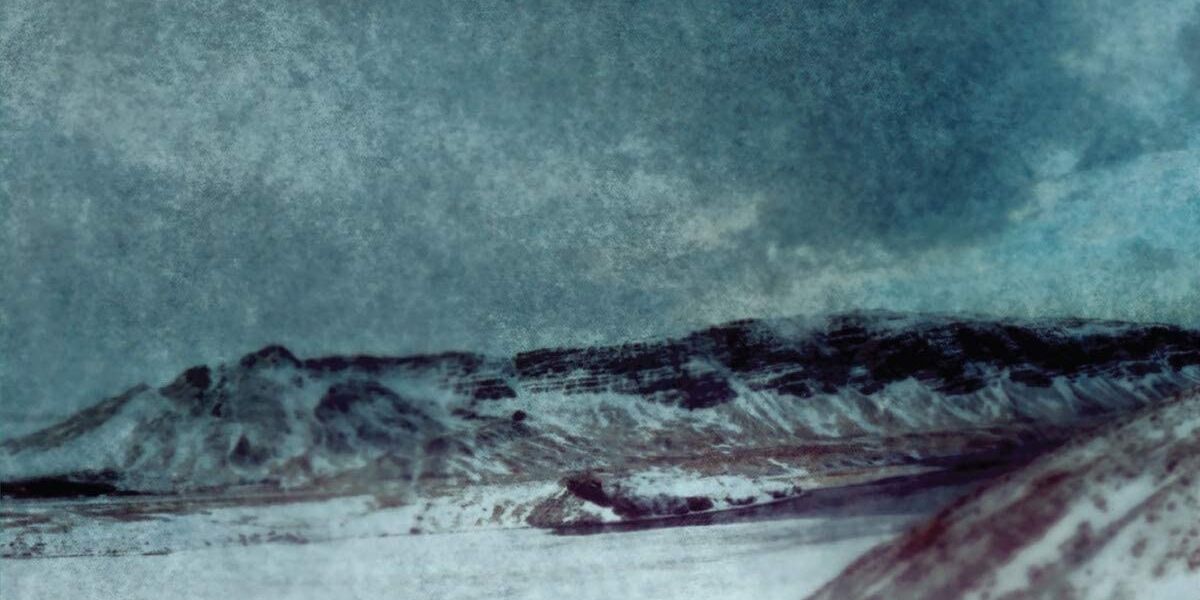Have you ever seen the paintings of English Romantic painter William Turner? He would turn a churning sea into a maelstrom of colors, the London’s polluted landscape into spiraling fog hues and tints, and the splendor of past civilizations into blushing shades and washes as if one were looking back at time through a telescope.
British musician Ed Harcourt creates the aural equivalents of Turner-style art on his latest instrumental album, Monochrome to Colour. The music is full of turbulent swells and swirls that somehow maintain a dignified beauty. The 12 tracks are expressive and imaginative but grounded in the natural world. As the record’s title suggests, Harcourt uses sounds as his paints and is more concerned with shading and washes than bold pigments.
Harcourt wrote and produced Monochrome to Colour using a mix of instruments including various synths, strings, drums, a 1910 Hopkinson baby grand piano, and a dulcitone, a 19th-century curiosity where hammers strike an assortment of tuning forks. Other musicians on the album include Clive Deamer (Portishead) on drums for three tracks, and Gita and Amy Langley on violin and cello. The music was recorded at Harcourt’s own Wolf Cabin studio in rural Oxfordshire between January and October 2019.
The dozen songs themselves are relatively short in length, all but two tracks between three and five minutes in length. The shortest is the quietly reflective “So Here’s to You, Hally” at 2:40 while the disc opens with the longest track, the more restless “First Light” at 5:44. The titles are opaque. Perhaps they have personal meaning to their creator. However, names such as “Only the Darkness Smiles For Your”, “King Raman”, and “Drowning in Dreams” give little information about what the songs are about. They are descriptively vague. Other titles seem more appropriate, such as the elaborate crescendos of “Ascension” and the morning after vibe of “After the Carnival”.
Harcourt can be playful. He begins “Childhood” with what seems to be the sound of plinking on a toy piano (presumably the dulcitone) before the melody blends into a more toned-down arrangement. As the instrumentation gets more mature, and an actual piano joins the proceedings, the feeling of looking backward is evoked. This is not childhood experienced as much as childhood remembered. The song ends wistfully and fades out like a memory.
On the other side of life comes “Last Rites”. It begins with a martial beat as if one’s walking in a funeral procession. While the drummer keeps a steady tempo, other instruments float in and out. The notes often linger and echo in the air before abruptly stopping. The song ends with a finality that suggests everything is over. But “Last Rites” appears just halfway into the album.
The last song is the title track, “Monochrome to Colour”. The music rises and falls as if struggling to get somewhere further up the hill. There seems to be turbulence. The natural world is evoked in the artfully recreated sounds of the wind, rain, and thunder. The music has a sobering impact. The cut ends with a fade-out. The song’s name is misleading as one doesn’t burst into bloom as much as dies away.
The title Monochrome to Colour suggests a systemized movement, but reordering the 12 songs and playing them at random wouldn’t be very different than listening to them as listed. They sound a lot alike, and they are individually pleasurable to hear. Harcourt delivers a tidy array of instrumental pieces. He leaves it up to the listener to complete the pictures.


